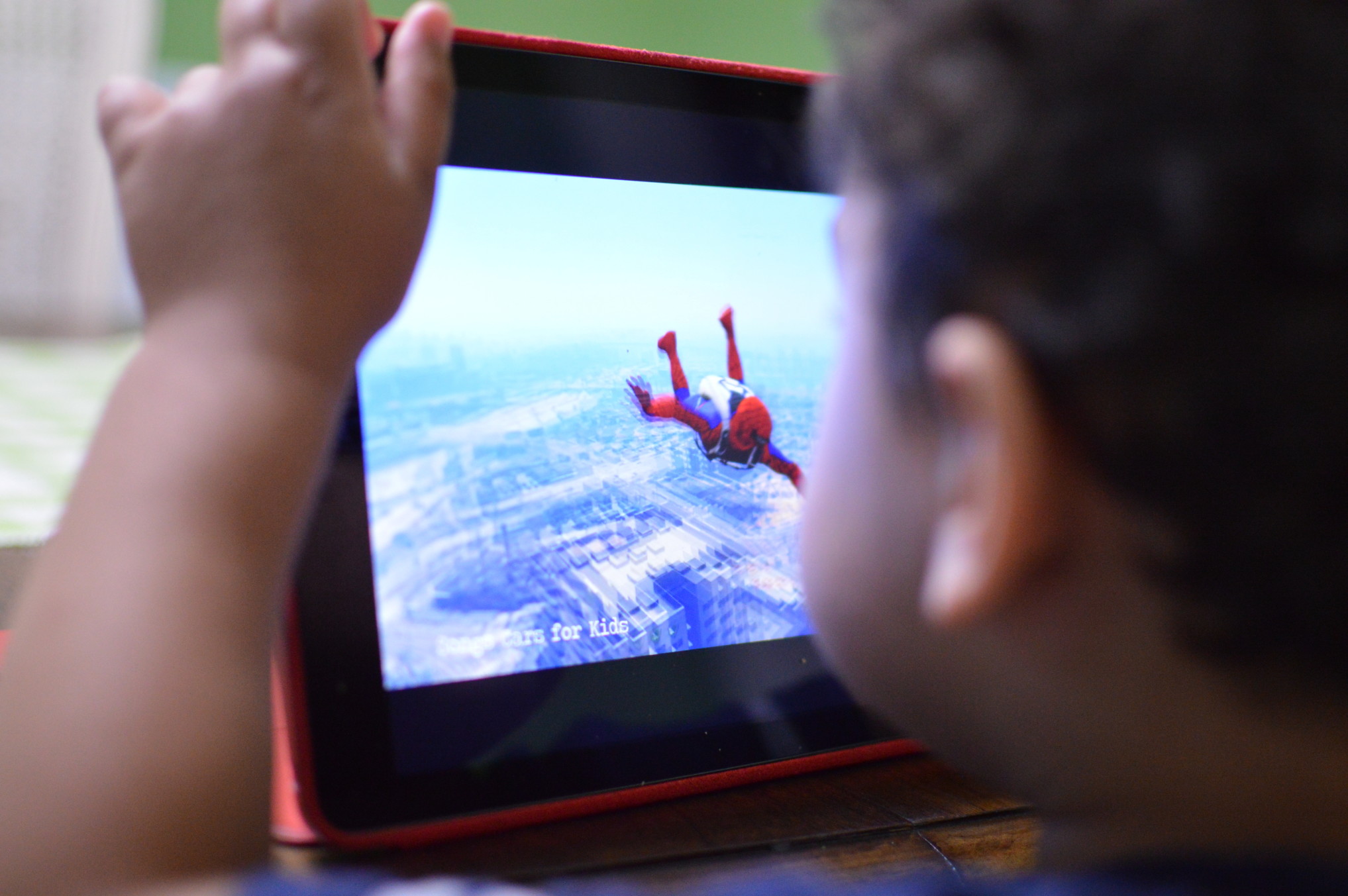
It was a sweaty 104-degrees in Southern California and my boys were burned out on pool days. For the first time in their young lives, my 6-year-old twins, Max and Brian, and 4-year-old, Jack, agreed they wanted to visit an indoor playground or trampoline park.
“Too expensive,” I said. The indoor facilities charge $15 per hour, per kid, where we live. We don’t have that kind of cash.
“McDonald’s,” I announced. “We’ll go to McDonald’s. I’ll sip an iced coffee while you guys play. Deal?”
“Deal!” they chimed in.
When we walked into the play area, I instantly regretted my decision. I couldn’t believe the scene in front of me. I thought about grabbing my kids and making a break for it.
At least eight big screen computers lined the back of the room—all equipped with video games.
My boys immediately tried to belly up to the computer bar.
“No,” I said, a word I try to restrict in my parenting efforts. “We’re here to play on the … the … the climbing thingy.”
Just the sight of the screens—and resulting shock—seemed to transform my brain into silly putty. I couldn’t talk. I was furious.
The boys, too, were visibly distraught—not because of the screens, but because of my reaction to them. After a fair amount of hemming, hawing and fruitless bargaining, the boys took off their shoes and played for a few minutes on the “climbing thingy.” Then, they walked back to the monitors, where I was perched playing the role of screen patrol.
This routine continued for about 15 minutes, during which they begged to play video games in 2-minute intervals.
They were resolute. I was, too.
“OK, boys, none of us are enjoying this. Let’s go somewhere else,” I suggested.
I tried to explain that their brains are still growing and changing, and video games intercept that process in negative ways. What I didn’t tell them, what they're too young to grasp or understand, is that studies, including one published in Clinical Psychological Science, show a link between screen time among adolescents/teens and mental states ranging from depression to suicidal thoughts.
Our boys are 6 and 4. They have the rest of their lives to focus on screens. I want them to play in the real world while they still can—or at least on an indoor climbing thingy.
In this war for my boys’ attention, I was going to win.
But it appears I’m an anomaly. As I looked around, the other parents didn’t seem bothered by the high-tech entertainment. In fact, they seemed to be enjoying it. The kids focused on the computer screens while the parents tapped, scrolled and swiped on their own devices—both parties getting an unlimited dopamine dump. I was the one who didn’t fit the mold.
So, my kids piled into the car and as we rolled away, I wondered, Do we really need screens in restaurants? Are we so unable to connect with our loved ones that we need a diversion we can count on in 30-second spurts?
Unfortunately, Ronald McDonald isn’t the only offender. Myriad chains from Italian restaurants to American favorites boast table-top gaming centers for kids and adults alike to play while they’re dining.
As a parent who tries to limit my kids’ access to screens outside of the classroom, that’s maddening. Our children can’t learn how to interact socially—how to dine in a restaurant or even play as kids should—when they’re constantly bombarded by the visual theatrics offered on a screen. What human being, what parent, can compete?
Suffice it to say, the ensuing standoff between me and my boys threatened to destroy our afternoon. But I wasn’t going to let the screens sabotage me again. In this war for my boys’ attention, I was going to win. Plan B: Hobbies!
Somehow, I coerced my boys out of the restaurant—miraculously without a meltdown—and headed to the craft store. I hit the clearance aisle and bought each child something he could do or make with his hands.
Two of my boys picked a model set. The other chose noodles that you can transform into animals, flowers or whatever he desired and could fashion out of five colors. All selected an activity that spawned creativity. The bonus: They all played independently and quietly, and I stepped in periodically to join the fun.
While I forked over a bit more cash than would be required for an iced coffee, the memories of making things with my boys is on full display. I have an array of noodle sculptures on my mantel as a reminder that the screens didn’t win—at least not while my boys are still young enough to mold.



